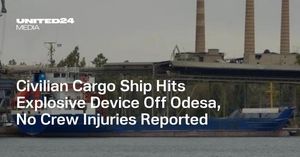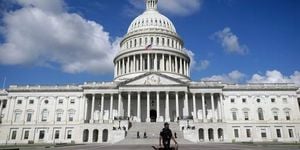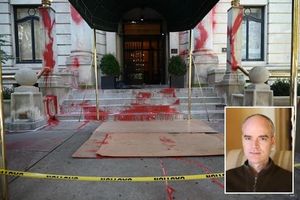On November 15, 1989, the city of Huntsville, Alabama, was forever changed when an F4 tornado tore through the region, leaving behind devastation and sorrow. This year marks the 35th anniversary of the Airport Road tornado, which not only took the lives of 21 individuals but also injured more than 400 and displaced many others. Former news anchor Jerry Hayes, who was on air during the storm, recalls the terrifying moment when the tornado struck Huntsville. "There was literally no warning," he stated. "I don’t think anybody was expecting it to roll down Airport Road." Even today, Hayes reflects on the emotional scars left behind, stating, "The physical scars have healed, but the emotional scars stayed with people for the rest of their lives."
That fateful afternoon began like any other—cloudy and humid—but by 4:30 p.m., conditions deteriorated rapidly. Meteorologists had issued only severe thunderstorm warnings, unaware of the impending catastrophe. The tornado first touched down at Redstone Arsenal, picking up speed and strength. Within minutes, it wreaked havoc through the heart of Huntsville, with winds reaching upwards of 250 mph. The chaos unfolded at rush hour, catching many residents off guard as they attempted to return home from work or run errands.
According to accounts from the time, the tornado traced an 18.5-mile path of destruction, significantly impacting neighborhoods and businesses. Scott Gilbert, then 24 years old, was taking a break with coworkers when he witnessed firsthand the horrifying scene outside. "We thought a bomb went off at first," he recalled. "The smoke was so black. We didn’t see much wind at first, and then suddenly it all happened." His shoulder was struck by flying debris, leading to 400 stitches, but he was among the fortunate few to survive. Many others were not so lucky.
Victims ranged from children to the elderly, with the storm claiming lives primarily at busy intersections where cars were caught unawares. Twelve of those killed were motorists trapped on the roads as they attempted to navigate home. Tragedy also struck at the Jones Valley Elementary School, where many children were attending after-school programs. Thankfully, teachers and staff managed to get the children to safety before the worst hit, using their own bodies as shields from flying debris.
Following the storm, Huntsville began the long process of recovery. With over 259 homes and 80 businesses destroyed, the rebuilding effort was monumental. Local residents and volunteers banded together, offering assistance to displaced families and working to clear wreckage. Churches and community centers opened their doors to provide shelter for those left homeless. The sense of camaraderie and resilience among residents served as the backbone for the rebuilding efforts.
The memory of the tornado remains entrenched not only within the infrastructure of the city but also within the hearts of its residents. A memorial now stands at the intersection of Airport Road and Whitesburg Drive, serving as a grim reminder of the lives lost on November 15, 1989. For many, including Hayes, the memorial invokes powerful memories. "I hope people will drive by and notice it and say, 'Oh, that's to recall the lives we lost,'" he told reporters.
The advancements in technology since the disaster have dramatically improved the methods used to anticipate tornadoes. Radar equipment back then did not provide real-time updates as it does today. Now, systems utilize dual-pol radar technology to get detailed information about storm structures and debris, helping meteorologists warn communities before storms develop. Despite these advancements, the psychological impact of the 1989 tornado highlights the urgency of preparedness and awareness. By remembering this catastrophic event, the Huntsville community holds the lessons learned and honors the memories of those who perished.
Despite the passage of time, the stories of survival and loss continue to resonate. For Huntsville, the struggle of recovery transformed the city's identity with resilience and unity at its core. Every year during the anniversary, community members gather to share their experiences, ensuring the day is not simply forgotten. Reflecting on the past encourages families to discuss tornado preparedness, fostering an environment of safety for future generations.
Today, the legacy of the Airport Road tornado reminds all of the unpredictability of nature and its capacity for destruction. Yet, it also shines light on the indomitable spirit of those who call Huntsville home, who came together to rebuild, adapt, and honor the memory of their lost neighbors. Each story told, each life remembered is part of the broader narrative of survival—one where hope emerges from despair, and community binds through tragedy.



